- 25
- Jan
Anchor rod induction heating quenching and tempering heat treatment production line
Anchor rod induction heating quenching and tempering heat treatment production line
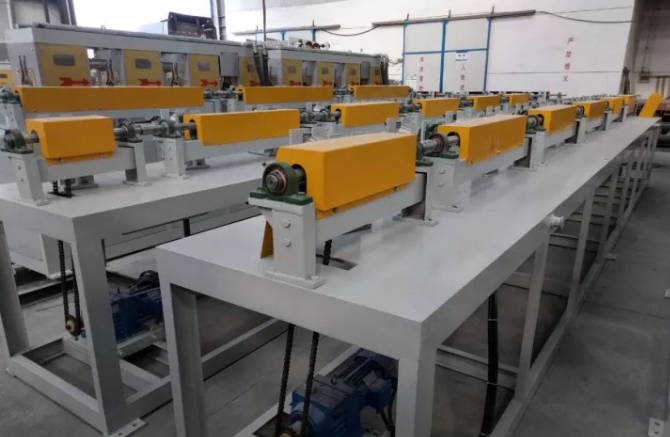
The application of bolt reinforcement technology in engineering is very extensive. At present, it has been developed in the application of ground anchoring in underground engineering, slope engineering, structural anti-floating engineering, deep foundation pit engineering, gravity dam reinforcement engineering, bridge engineering, and anti-overturning and seismic engineering. In recent years, my country’s ongoing large-scale infrastructure construction including high-speed railways, cross-sea bridges, subsea tunnels, subways, wind power, etc. encountered foundation treatment, slope reinforcement, underground space structure reinforcement, and underwater space structure solidification. Among the various problems, the method of reinforcing the anchor rod has been greatly expanded. Like other quenching and tempering, the induction quenching and tempering heat treatment production line is mainly to improve the mechanical properties of the bolt and obtain the desired sorbite structure.
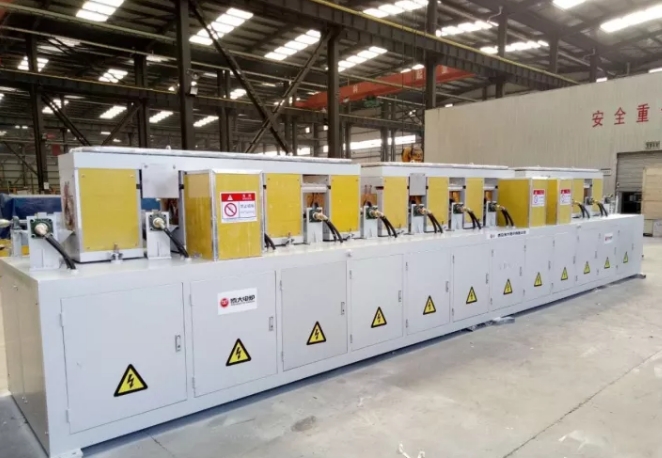
Project Introduction:
Independent research and development, production and manufacturing. This quenching and tempering heat treatment production line consists of two parts: quenching and tempering; the quenching heating part is composed of two sets of intermediate frequency power supplies with different powers and multiple sets of heating induction coils. The total power of the quenching part is 750Kw, the total power of the tempering part is 400Kw, and the bus length reaches 38.62. M, the spray part is composed of three groups of spray circles.
Process and technical parameters:
Bar diameter range (mm): Φ30-65
Bar length range (mm): 2000-7500
Bar material: 45, 40Cr, 42CrMo, etc.
Quenching temperature: 750-1200℃
Tempering temperature: 500-900℃
Hardness range: 25-40HRC
Maximum production capacity: 2t/h
The final hardness uniformity is required to be ±10HB. On the basis of the straightness of the raw material, the straightness of the bar after quenching and tempering is required to be less than 1mm/m.
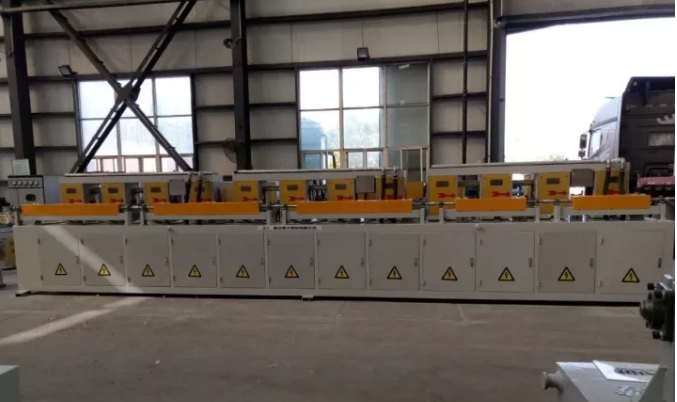
The spray ring adopts a fully enclosed type, which prevents the spray liquid from splashing out and is also conducive to the backflow of the spray water. The relative position of the grading spray device is adjustable, and there is a sump for recovering quenching liquid to avoid splashing of spray water. Each level of spray system has an independent water pump and electronic flowmeter to make it controllable.
Anchor rod induction heating quenching and tempering heat treatment production line
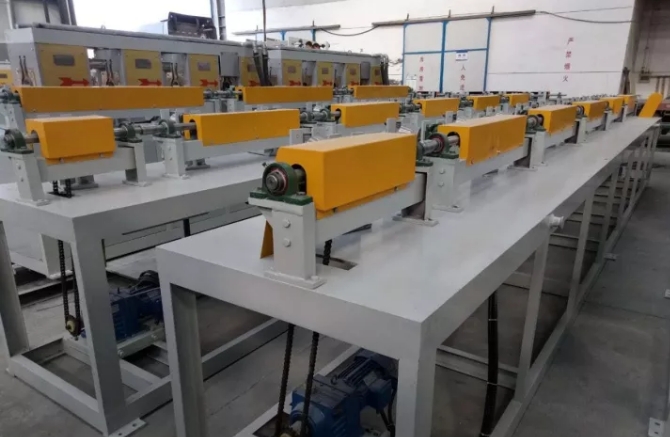
The application of bolt reinforcement technology in engineering is very extensive. At present, it has been developed in the application of ground anchoring in underground engineering, slope engineering, structural anti-floating engineering, deep foundation pit engineering, gravity dam reinforcement engineering, bridge engineering, and anti-overturning and seismic engineering. In recent years, my country’s ongoing large-scale infrastructure construction including high-speed railways, cross-sea bridges, subsea tunnels, subways, wind power, etc. encountered foundation treatment, slope reinforcement, underground space structure reinforcement, and underwater space structure solidification. Among the various problems, the method of reinforcing the anchor rod has been greatly expanded. Like other quenching and tempering, the induction quenching and tempering heat treatment production line is mainly to improve the mechanical properties of the bolt and obtain the desired sorbite structure.
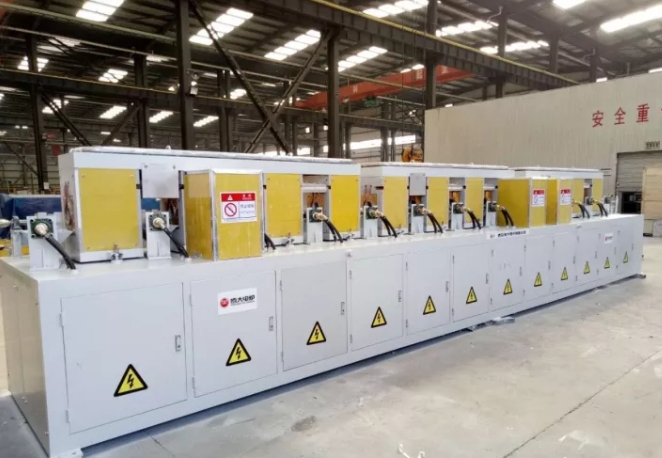
Project Introduction:
Independent research and development, production and manufacturing. This quenching and tempering heat treatment production line consists of two parts: quenching and tempering; the quenching heating part is composed of two sets of intermediate frequency power supplies with different powers and multiple sets of heating induction coils. The total power of the quenching part is 750Kw, the total power of the tempering part is 400Kw, and the bus length reaches 38.62. M, the spray part is composed of three groups of spray circles.
Process and technical parameters:
Bar diameter range (mm): Φ30-65
Bar length range (mm): 2000-7500
Bar material: 45, 40Cr, 42CrMo, etc.
Quenching temperature: 750-1200℃
Tempering temperature: 500-900℃
Hardness range: 25-40HRC
Maximum production capacity: 2t/h
The final hardness uniformity is required to be ±10HB. On the basis of the straightness of the raw material, the straightness of the bar after quenching and tempering is required to be less than 1mm/m.
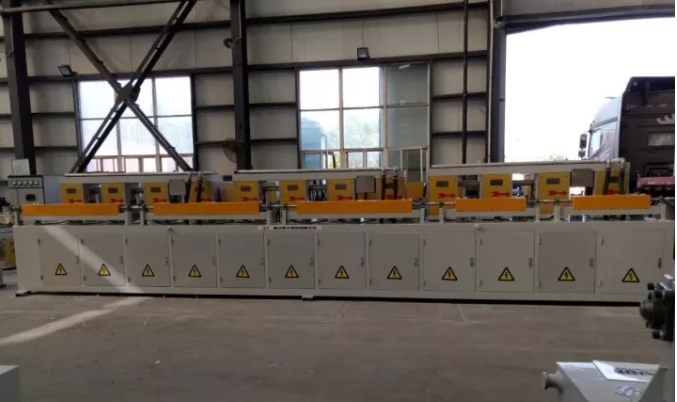
The spray ring adopts a fully enclosed type, which prevents the spray liquid from splashing out and is also conducive to the backflow of the spray water. The relative position of the grading spray device is adjustable, and there is a sump for recovering quenching liquid to avoid splashing of spray water. Each level of spray system has an independent water pump and electronic flowmeter to make it controllable.
